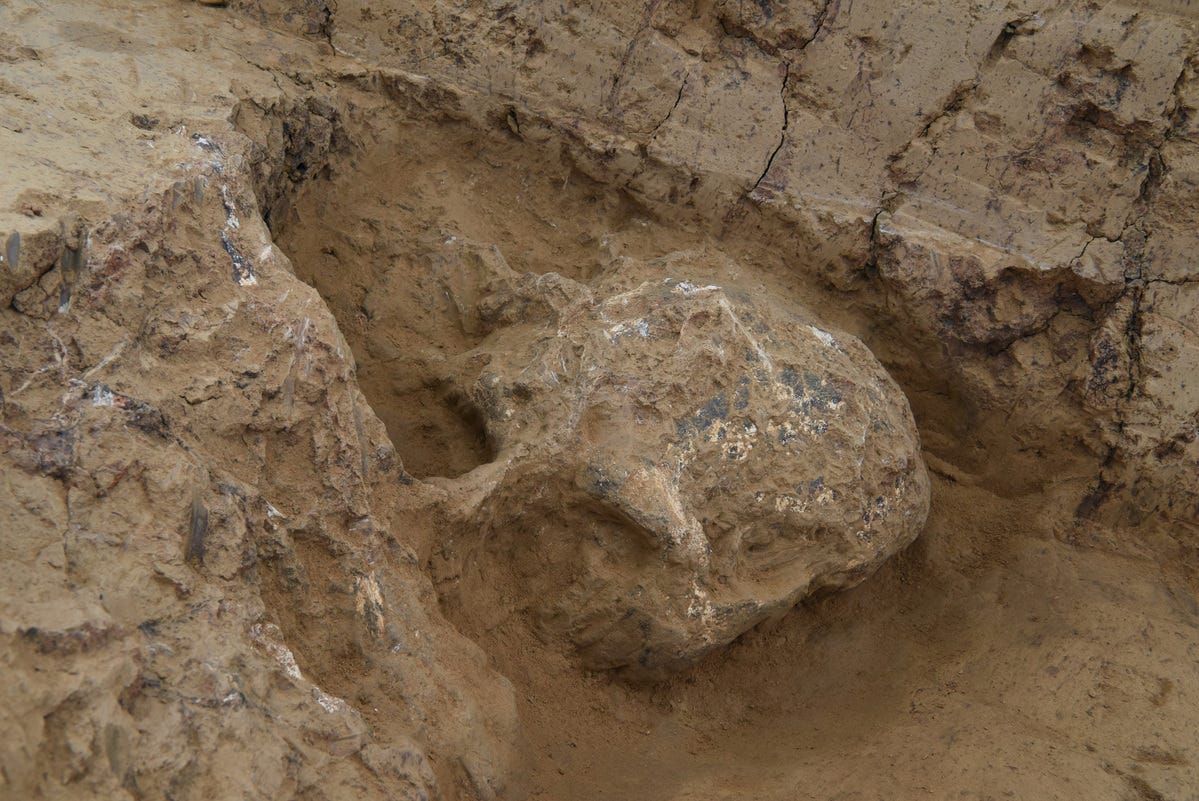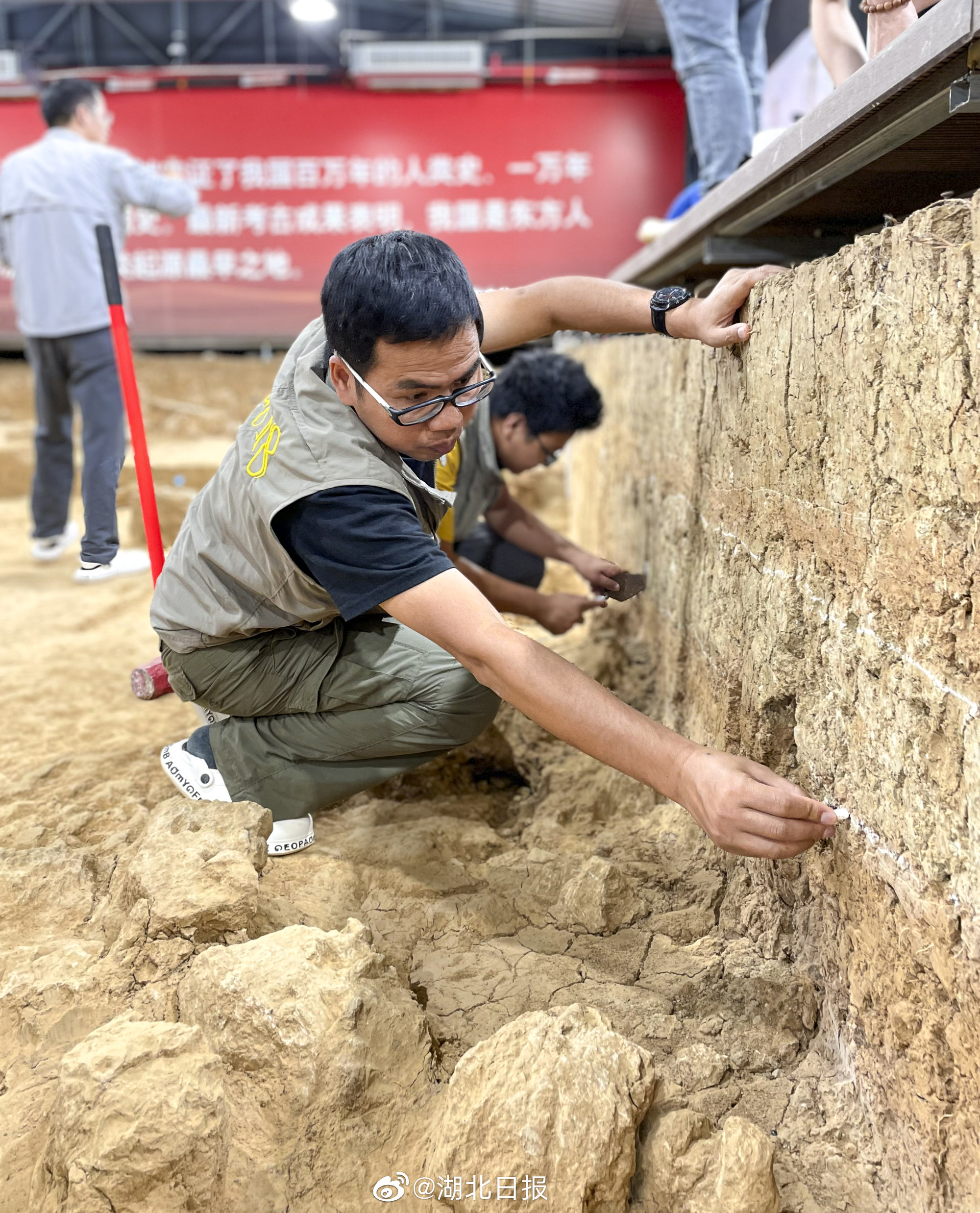Archaeologists and paleontologists recently discovered a fossilized human skull that is about 1 million years old in central China’s Hubei province, according to a press conference held by the State Administration of Cultural Heritage in Beijing on Wednesday.

The skull was found at the same site where two other skulls of the same age were unearthed more than 30 years ago. But, unlike the previous finds, which were distorted during the fossilisation process, the latest discovery is near complete with no visible distortion. So far, the frontal bone, orbit and other parts of the head have been unearthed, with the rest of the fossil expected to be excavated before November.
Archaeologists expect the discovery to provide more accurate information on the human face and skull at that time, with clearer anatomical features visible, as well as significant scientific information on brain volume, evolutionary stages and regional population characteristics, the report said. Lu Chengqiu, head of the excavation team and a researcher with the Hubei Provincial Institute of Cultural Relics and Archaeology, said the team had unearthed a large number of animal fossils and stone tools near the skull. Besides, The fossil provides an important basis for exploring the evolution pattern of archaic humans and the origin of Homo erectus in East Asia.
Yunxianren No. 3 Skull was discovered in Xuetang Liangzi Excavation Site, Yunyang County, Shiyan City, Hubei Province
Scientists have identified two relics of him, dating from 800,000 to 1.1 million years ago, as his No 1 and No 2 skulls of the Yunxian Man Unzen Prefecture is the former name of Unyang Prefecture. “The No 3 skull is similar to the first two in terms of burial environment, faunal remains and technical characteristics of stone products, so the three skulls should belong to the same age,” Lu told the newspaper. The age of the skull would be further confirmed by radiocarbon dating, he said.

If so, this find is likely the best-preserved fossil skull of Homo erectus dating to about 1 million years ago so far found in the hinterland of the Eurasian continent. However, a sample of the sediment was later taken for laboratory testing to date the fossil. After several technical procedures such as geomagnetic, optical and cosmic primordial dating methods, it will take at least six months before the scientific results are available. In order to get a more reliable reference, dating not only extends to the entire site, but also focuses on skulls. All sediments found in the working area are taken to laboratories where extensive research is conducted in the fields of environmental science, geology, molecular biology and other natural sciences. Both the dating process and other site surveys can benefit from new technology. For example, Yunxian Man’s living environment is recreated using 3D virtual images.





